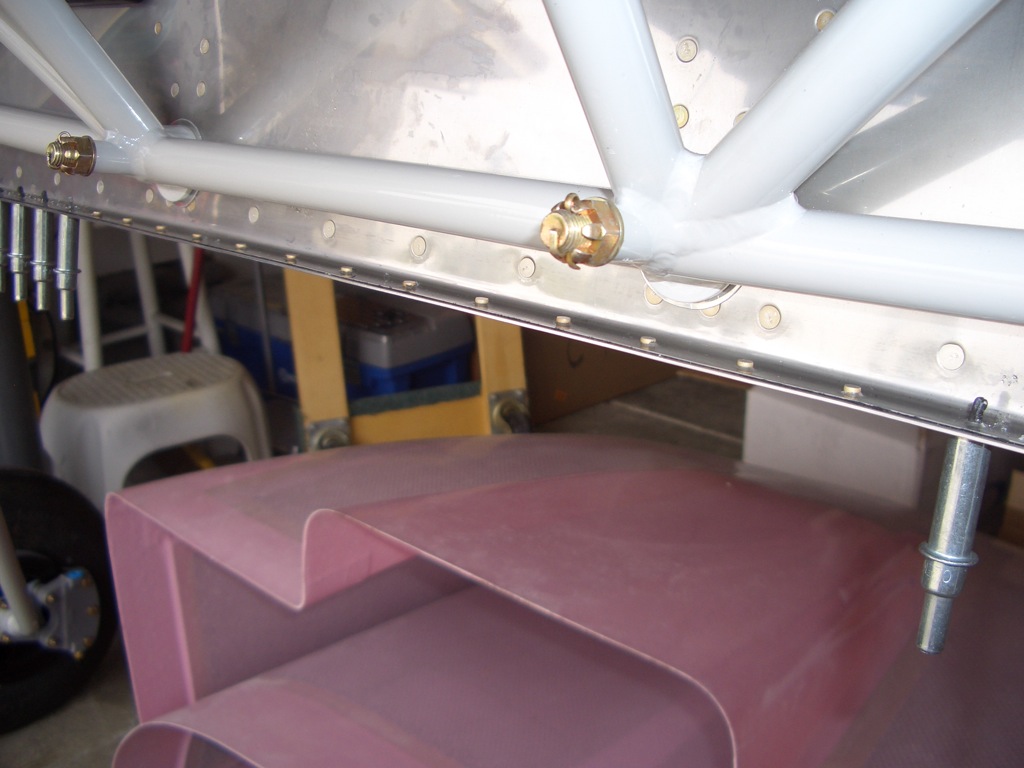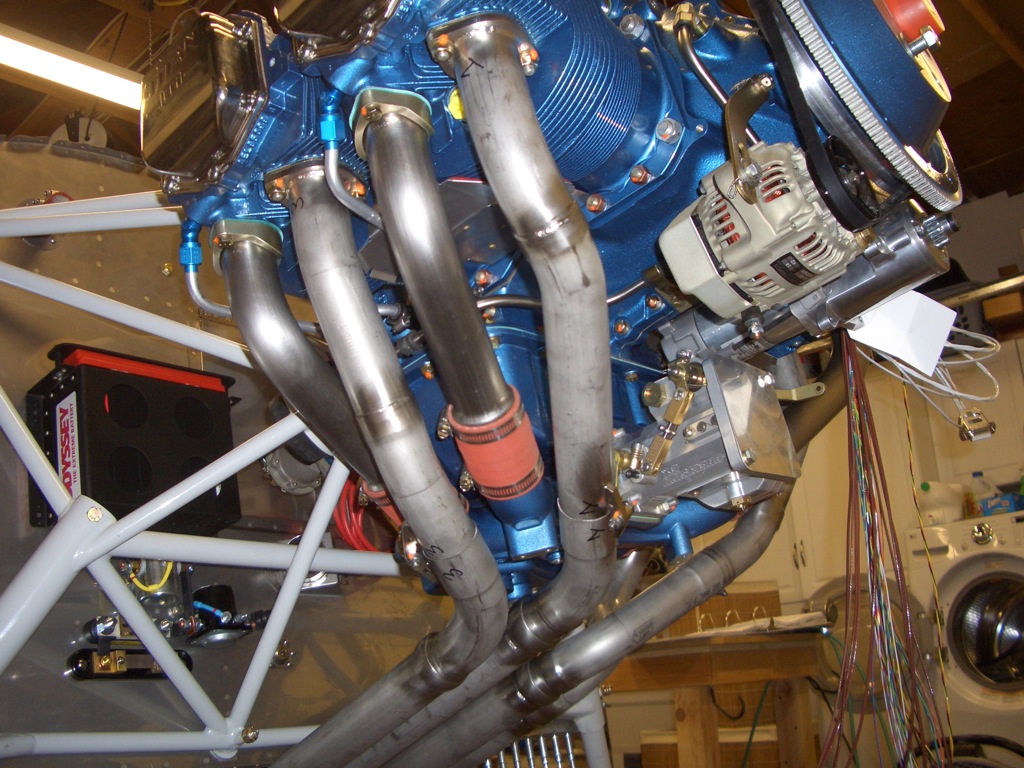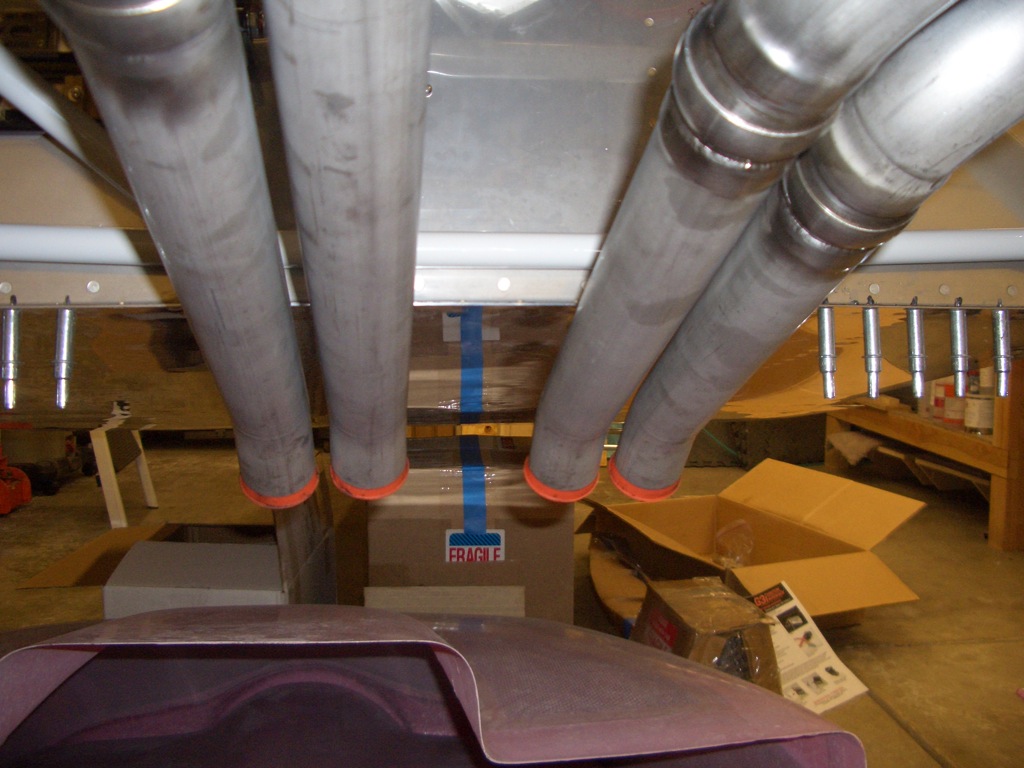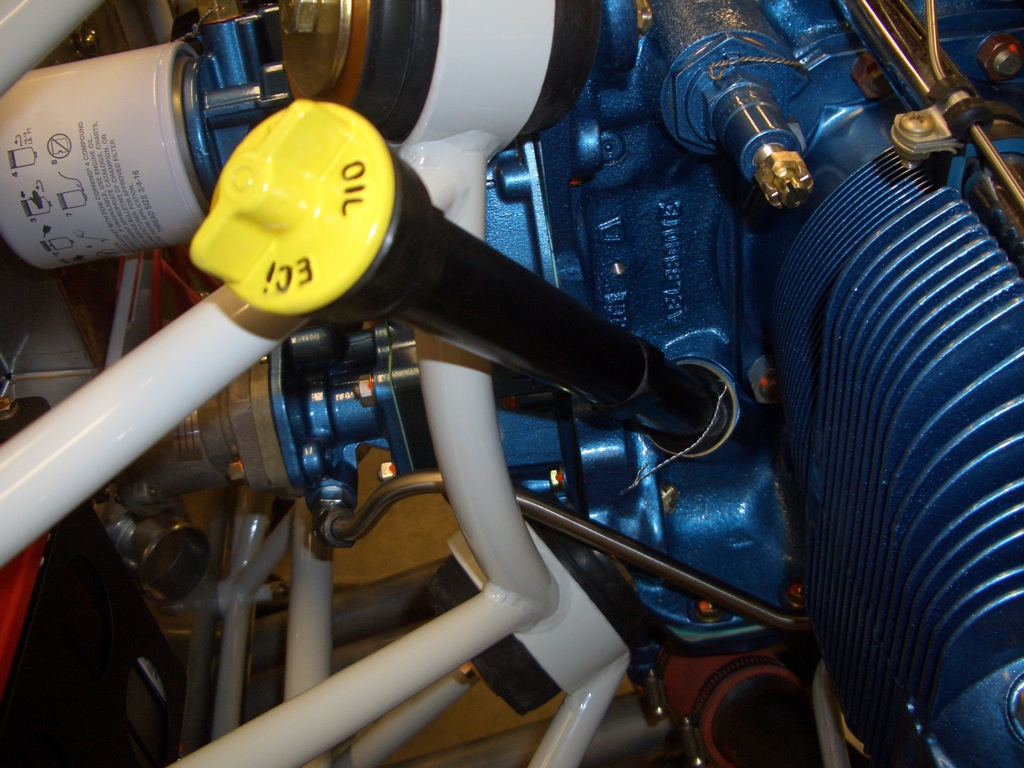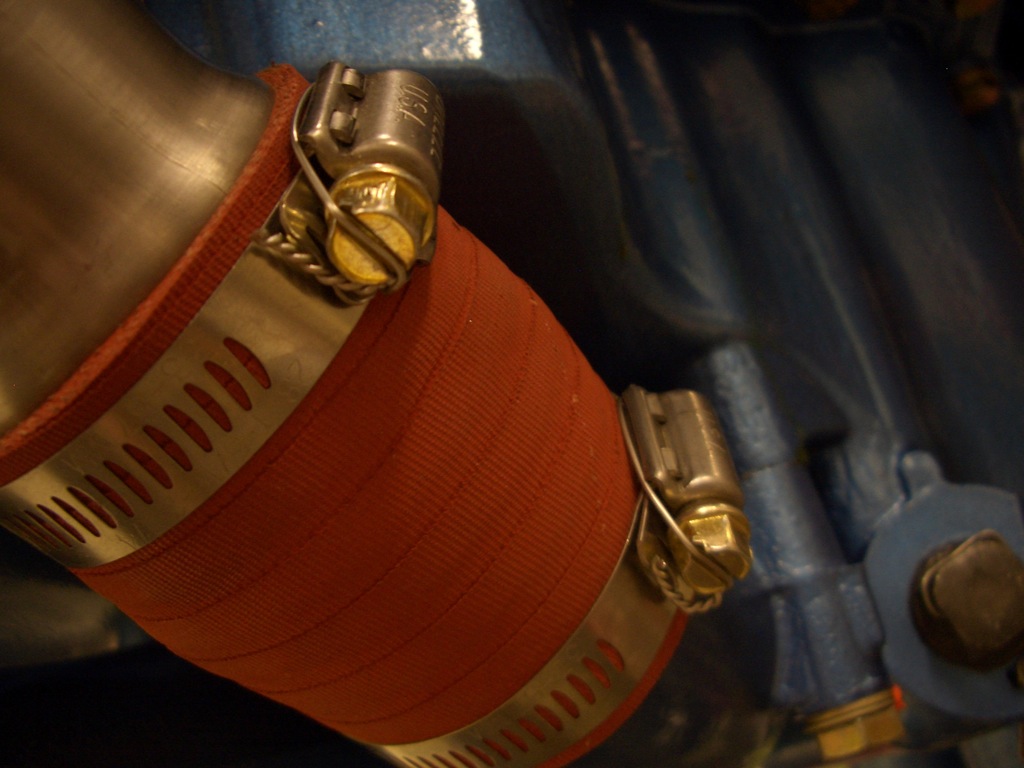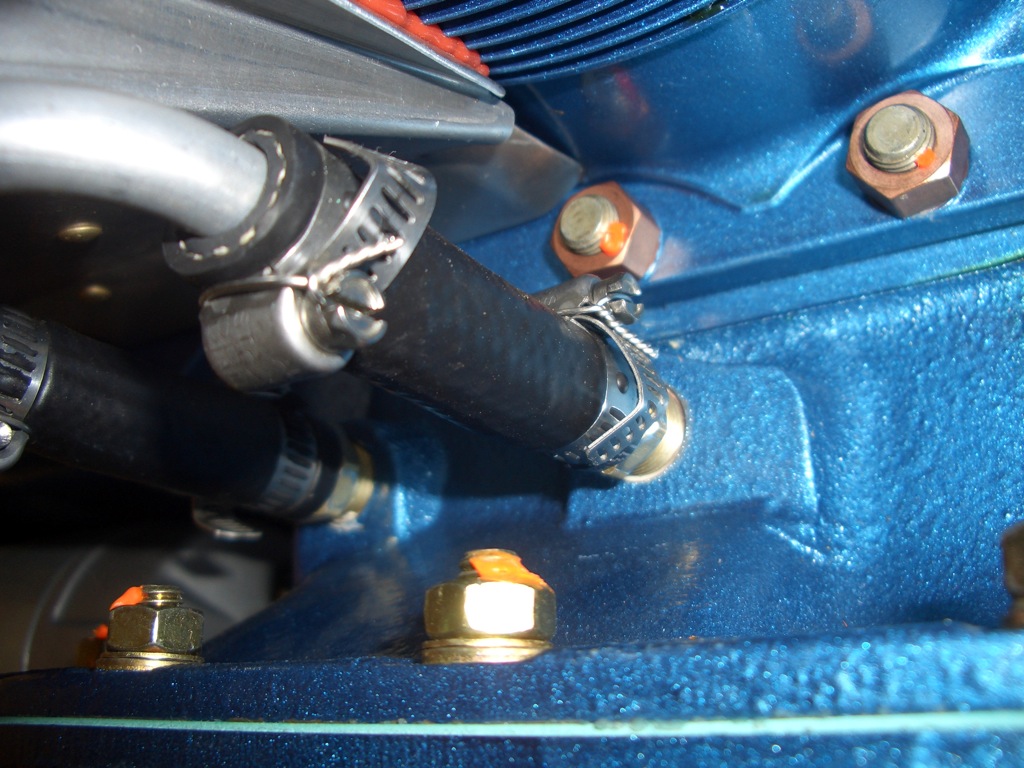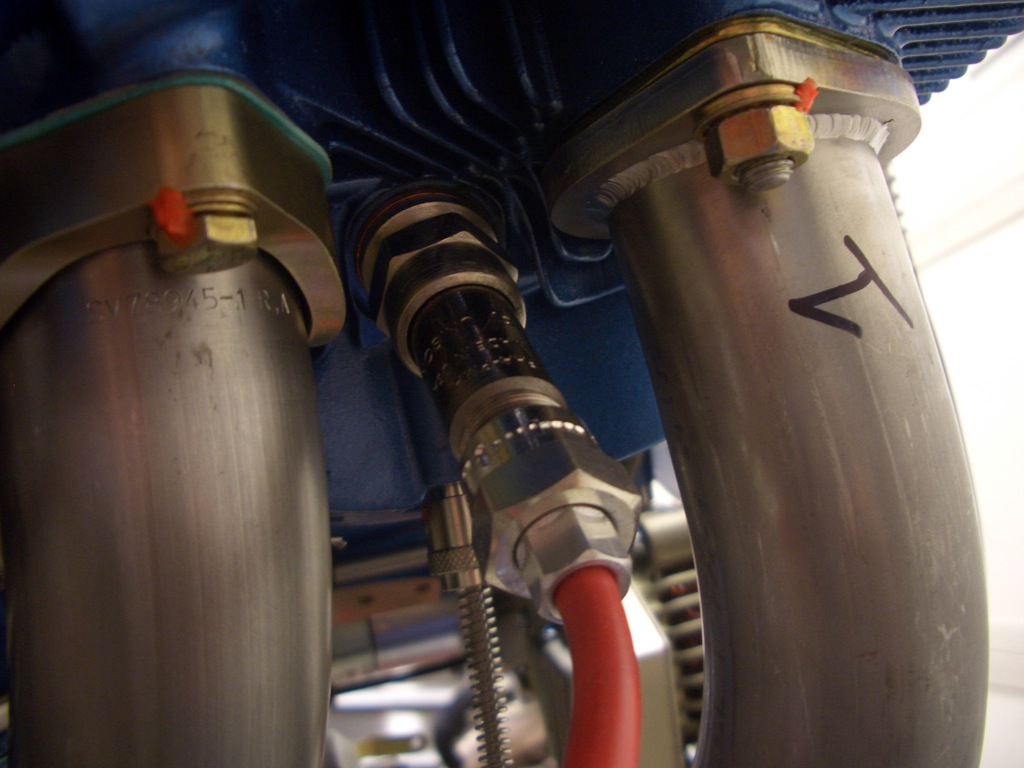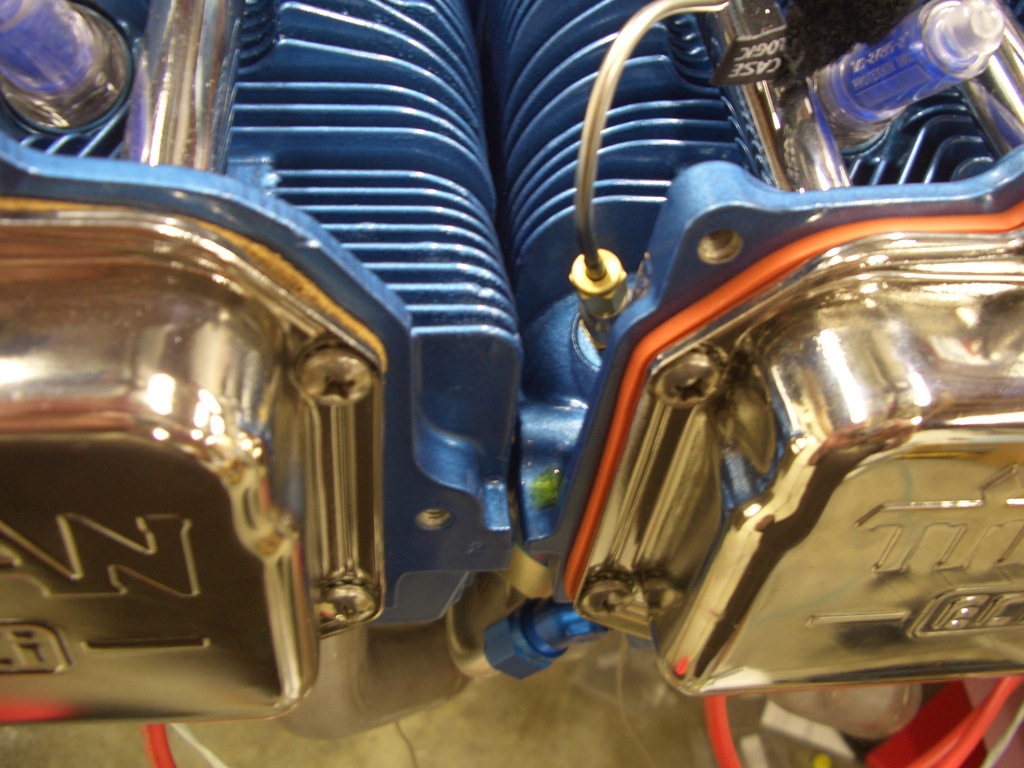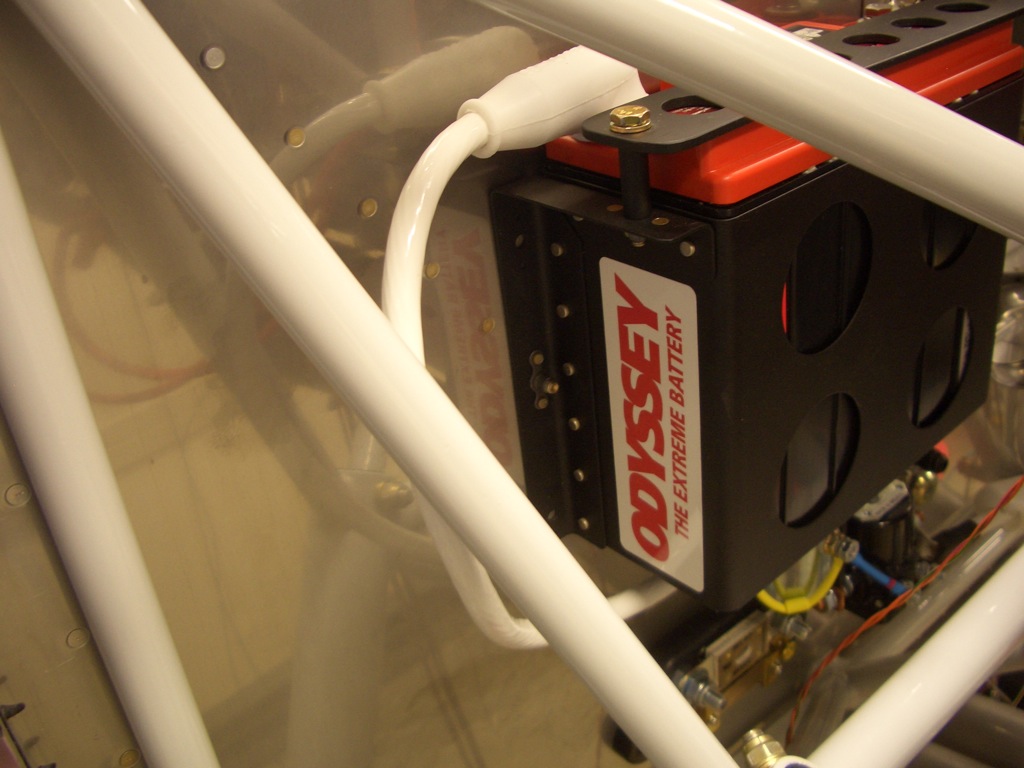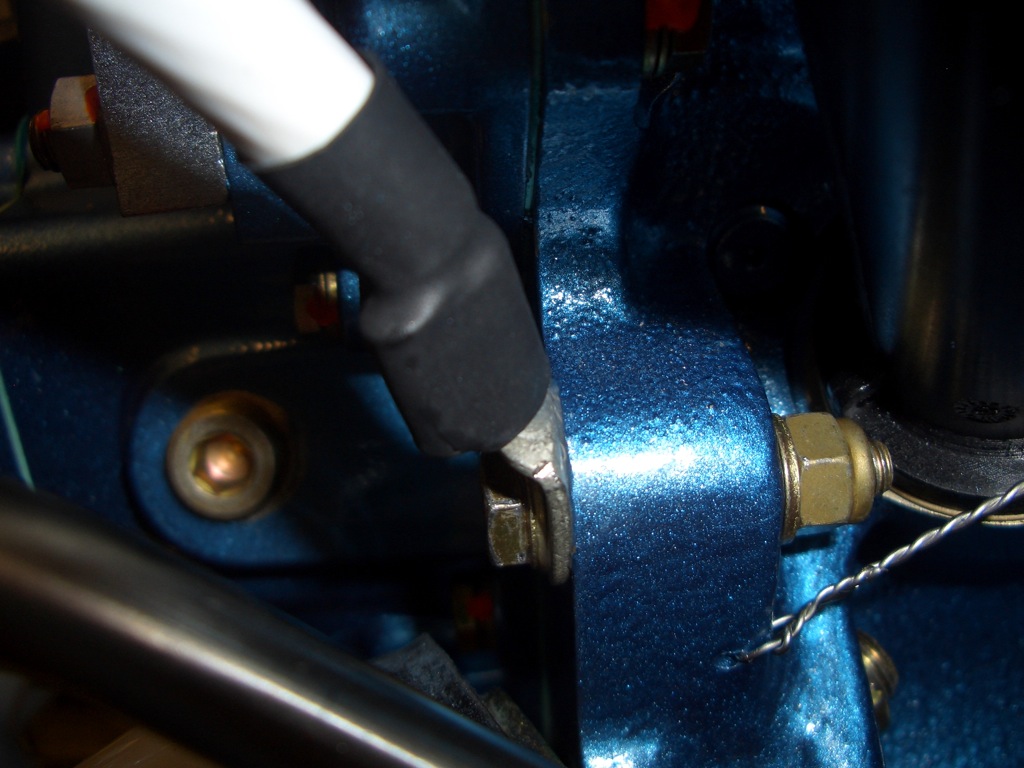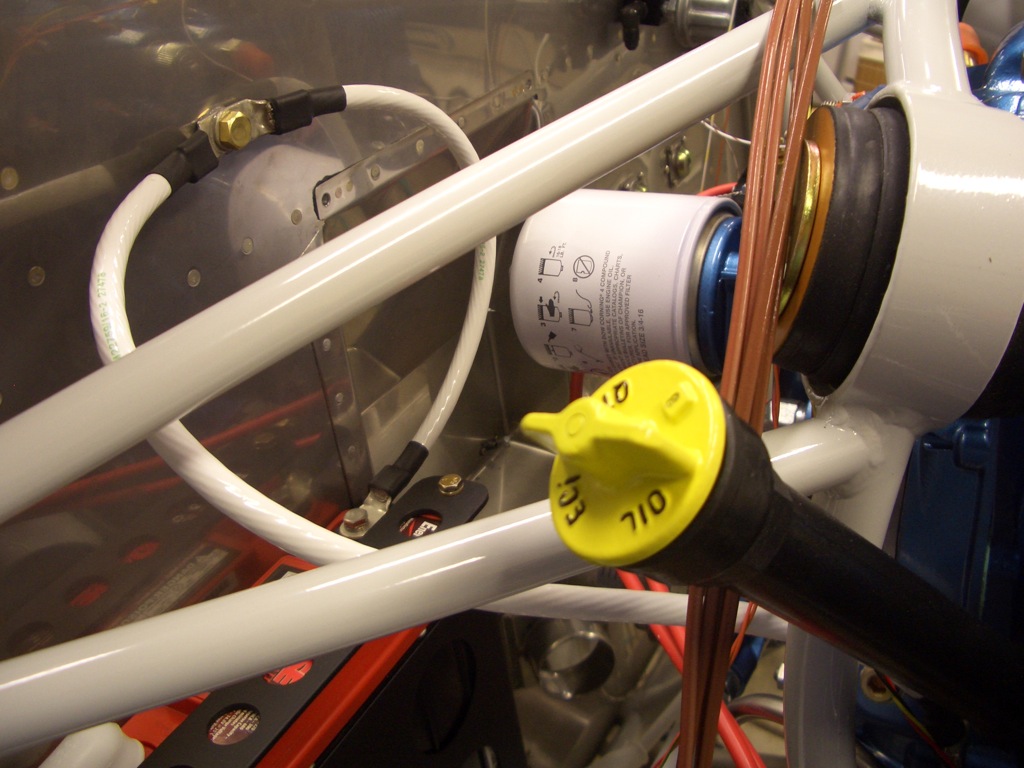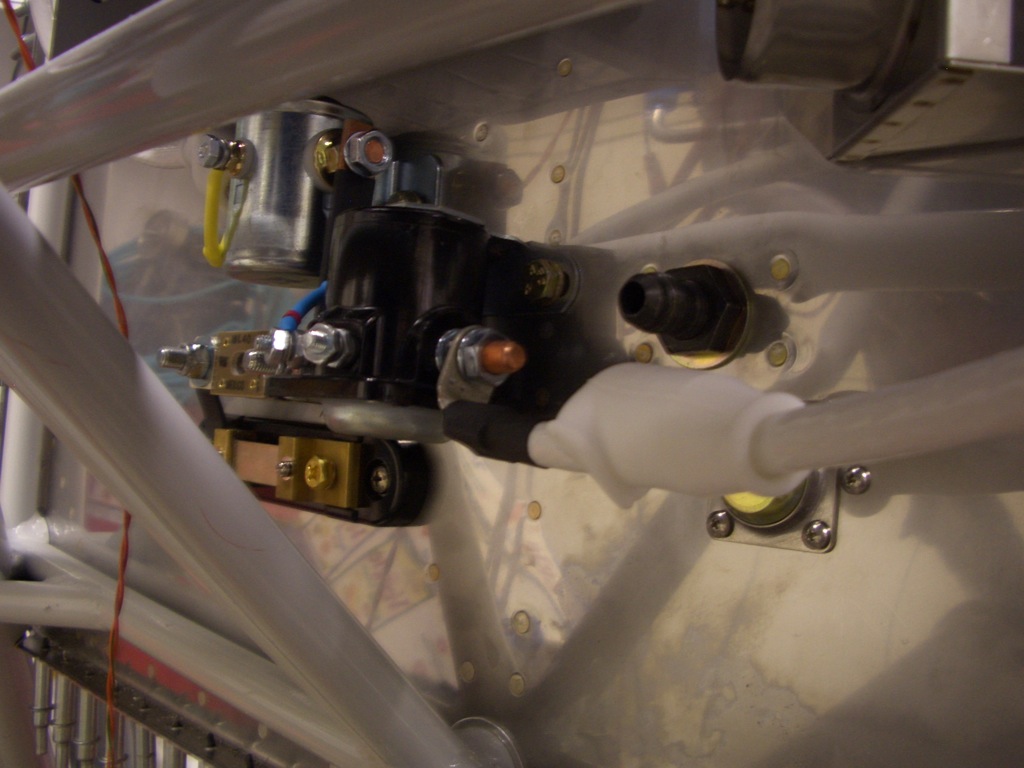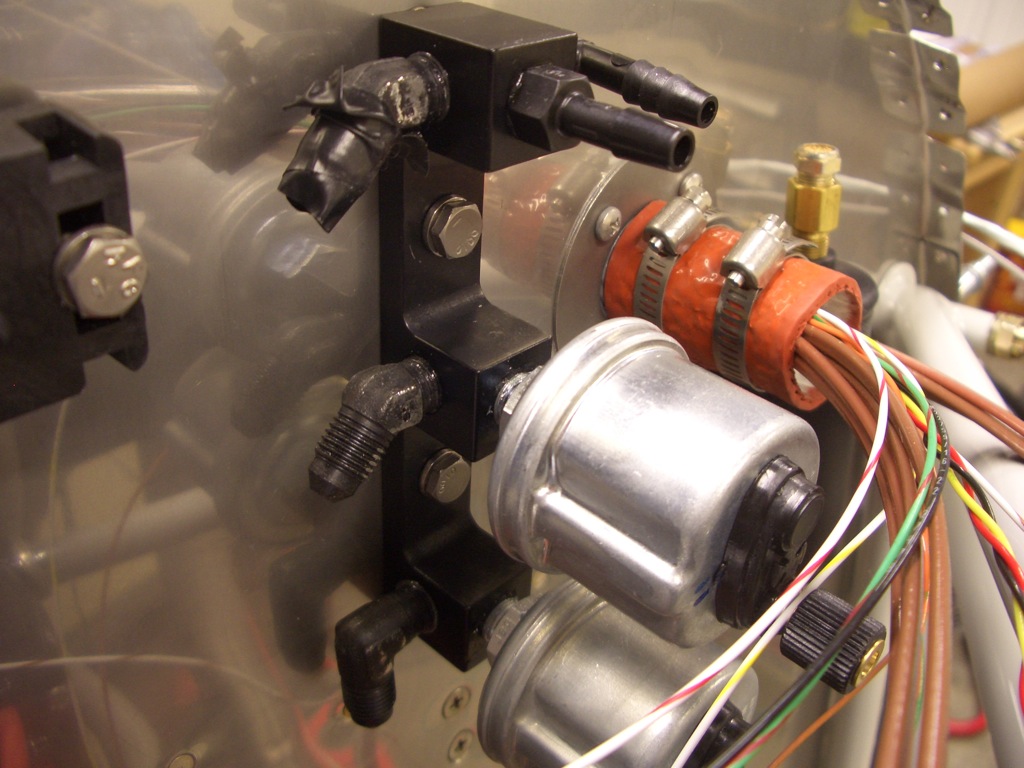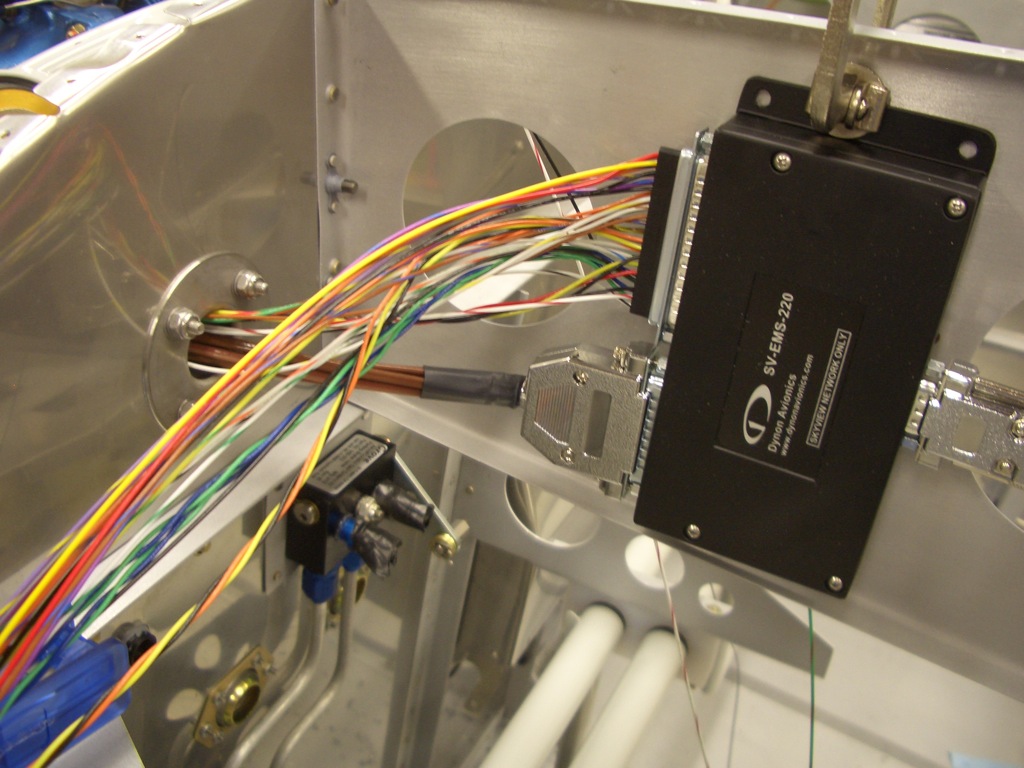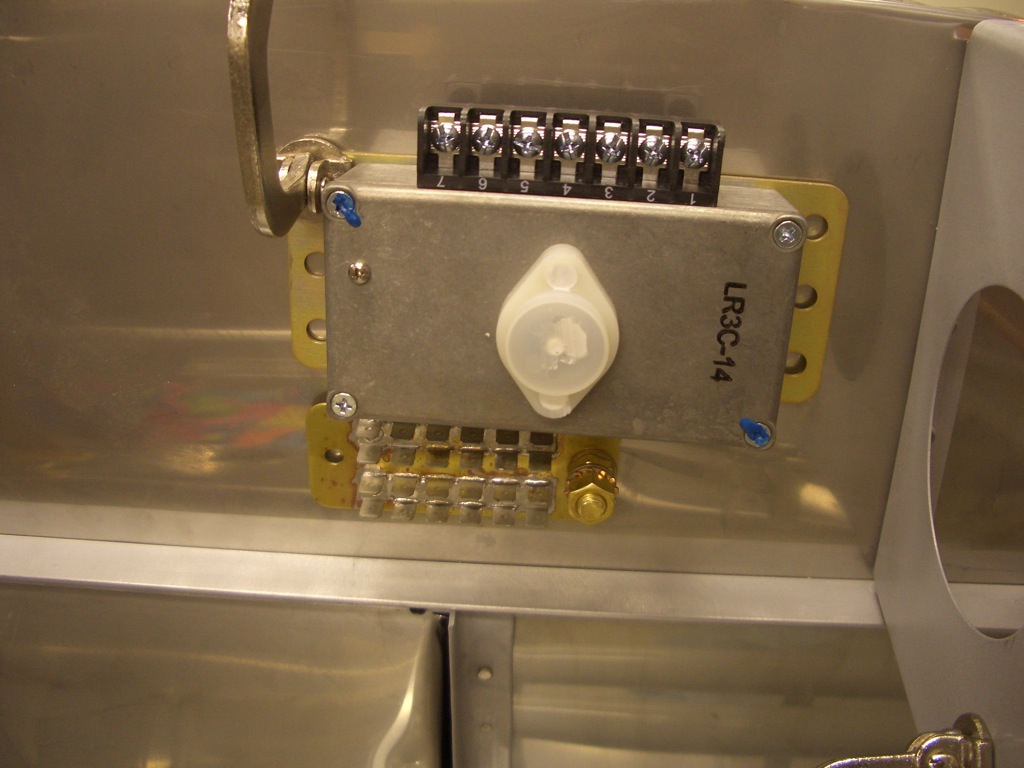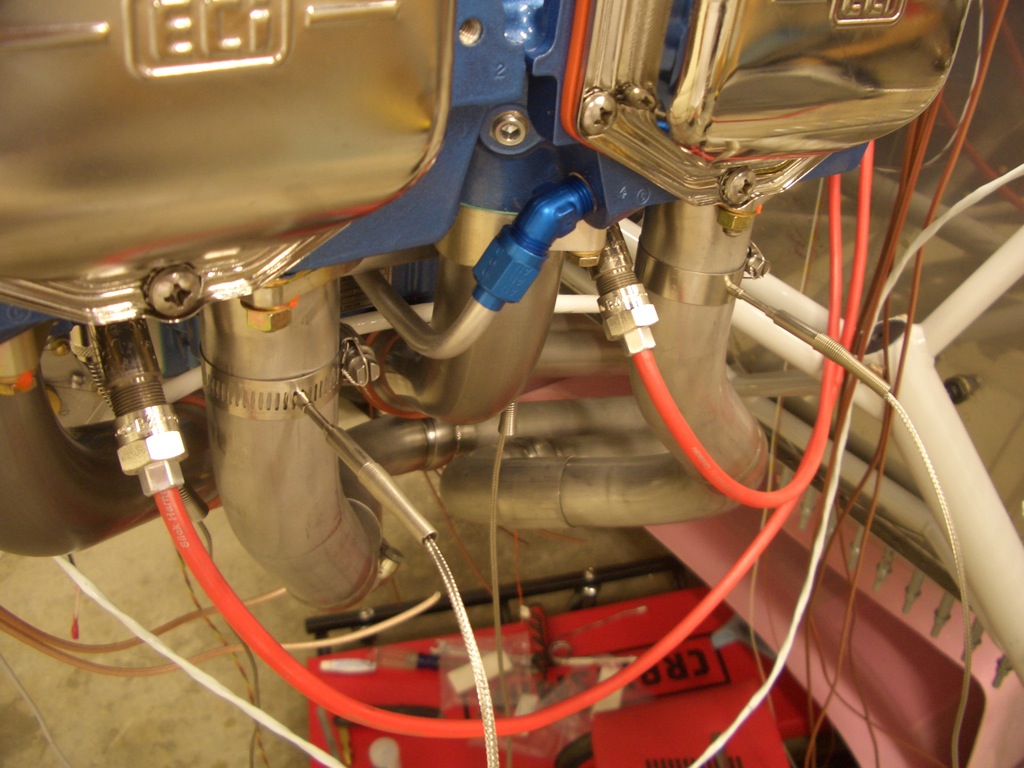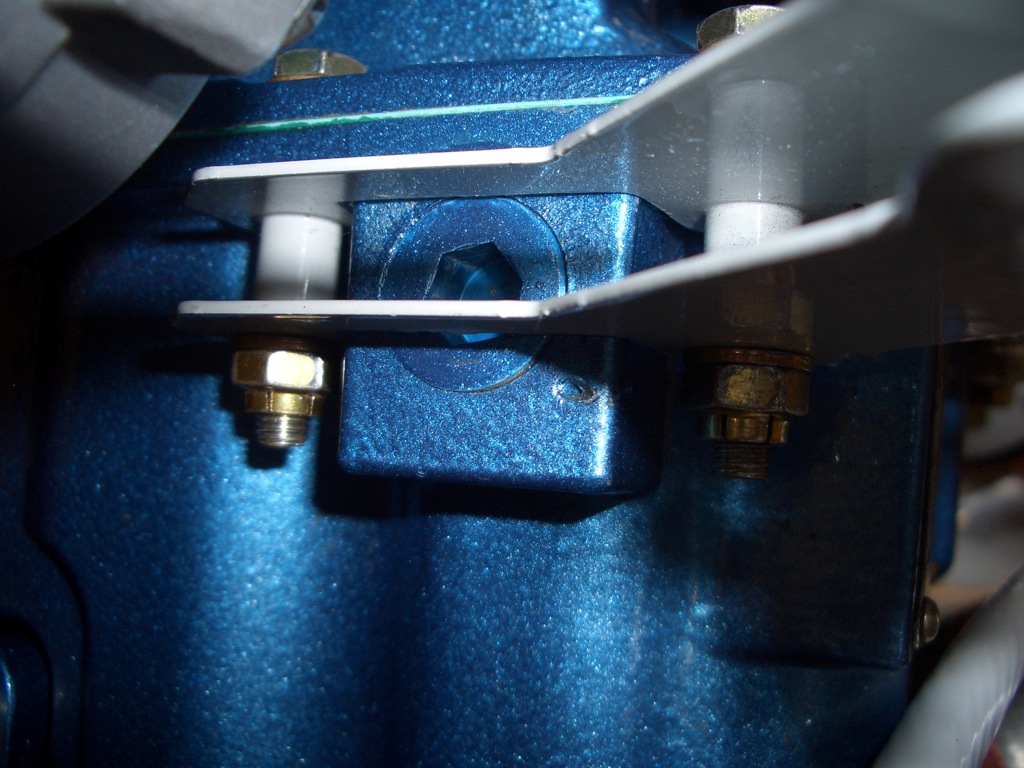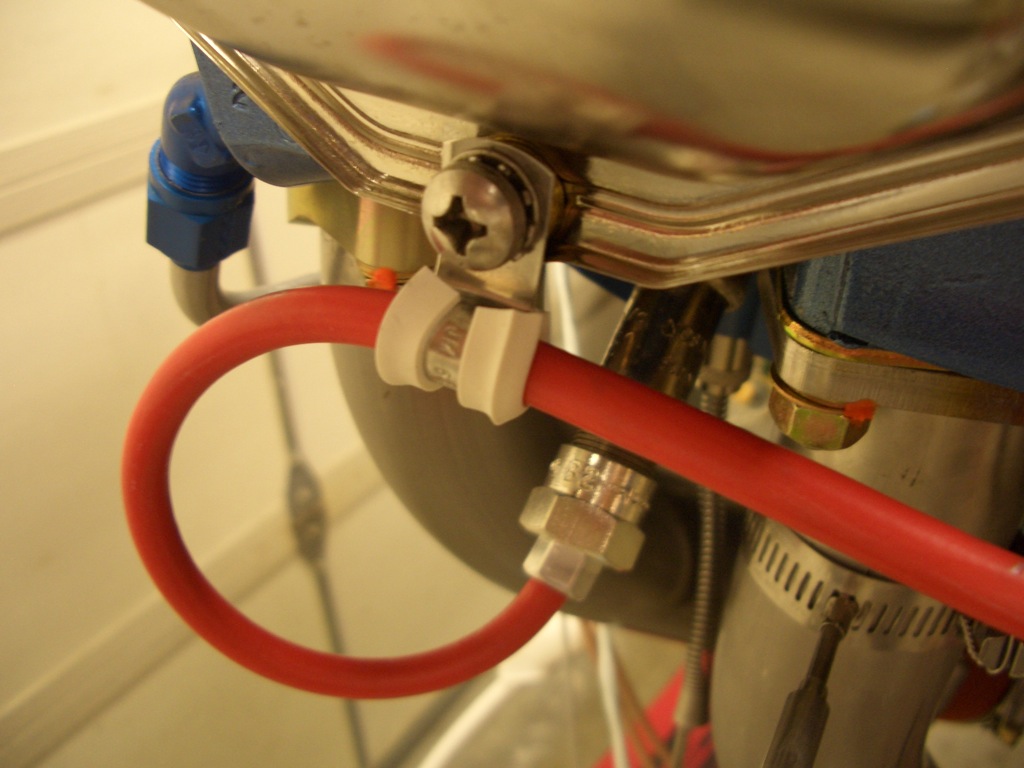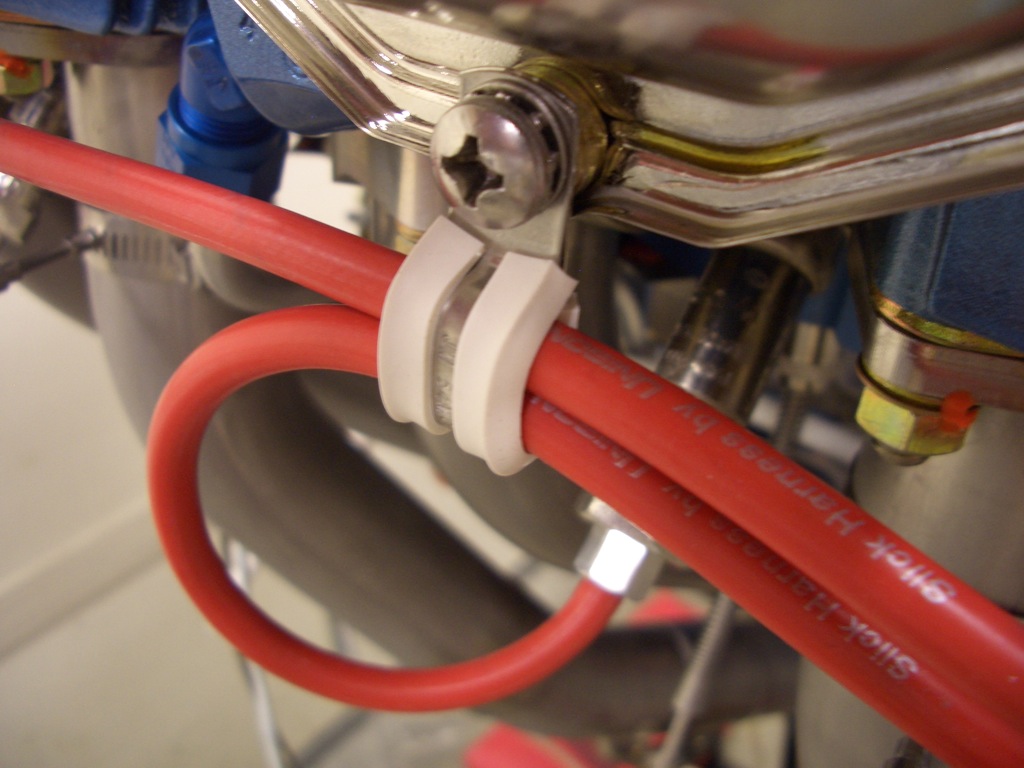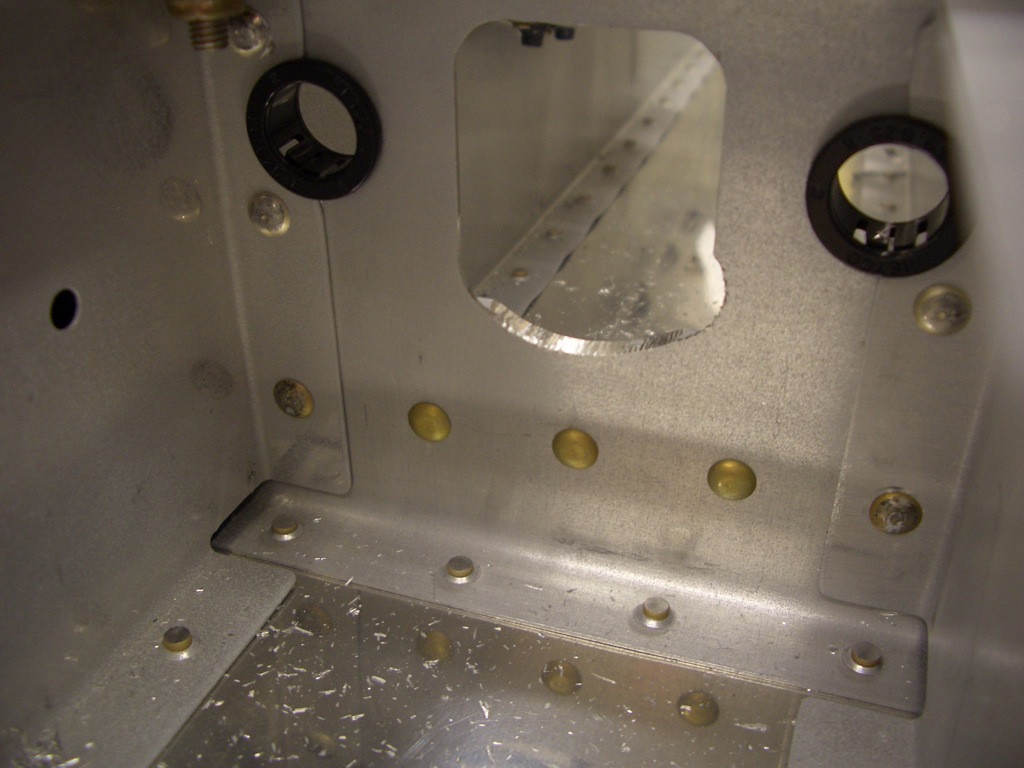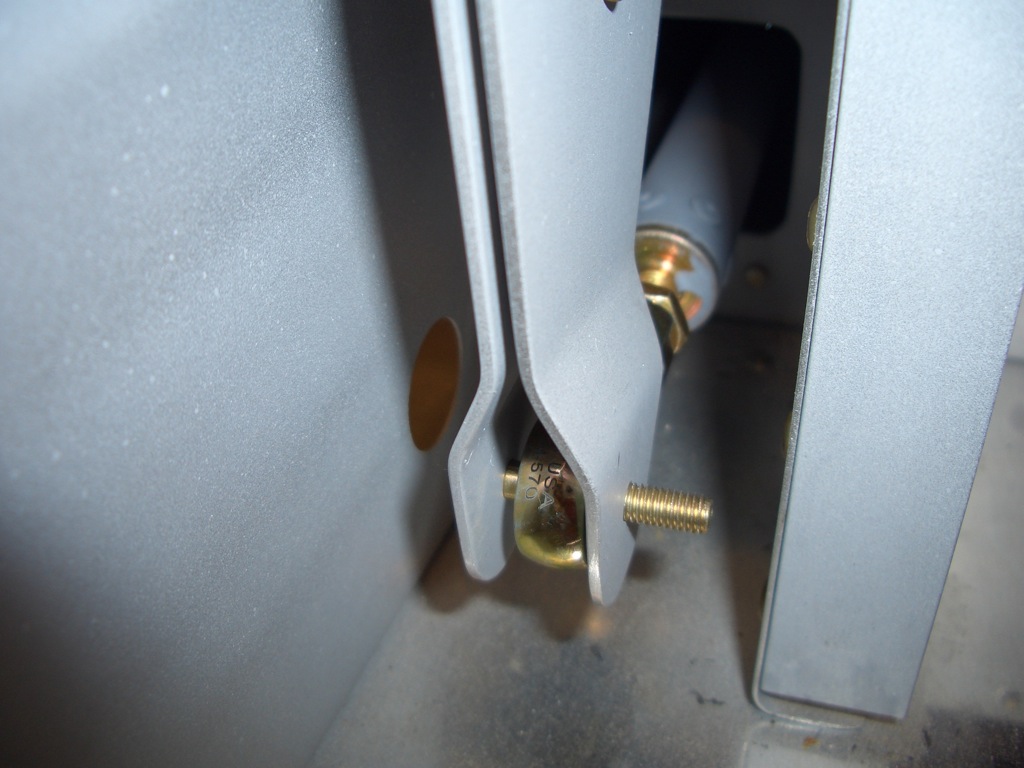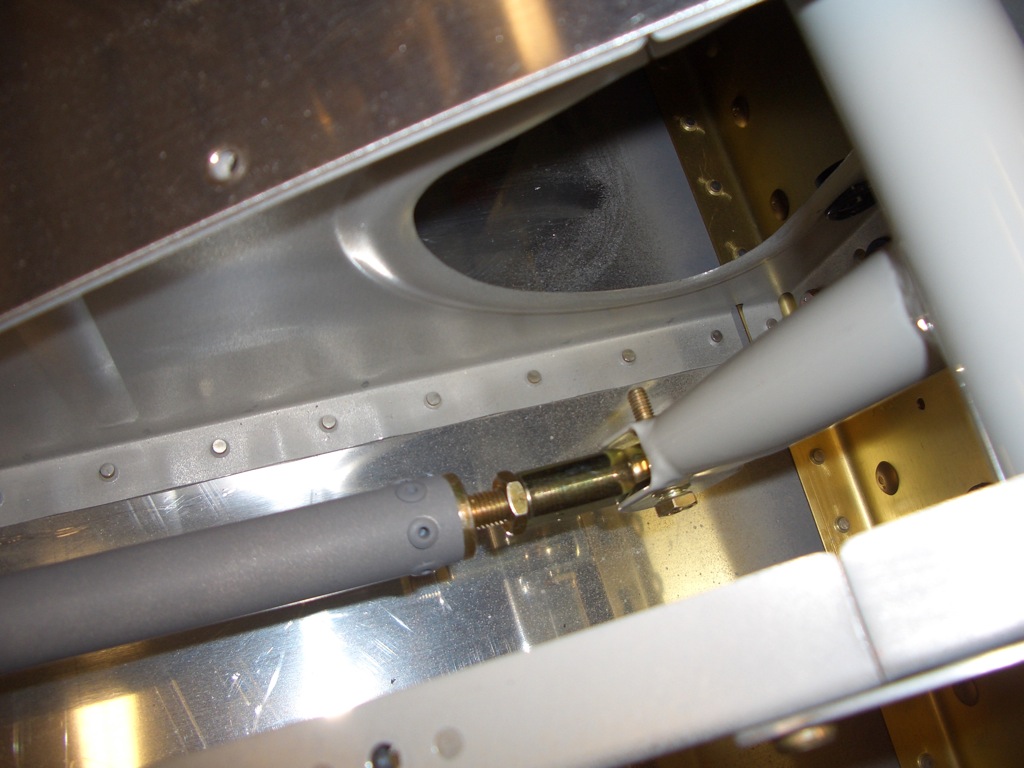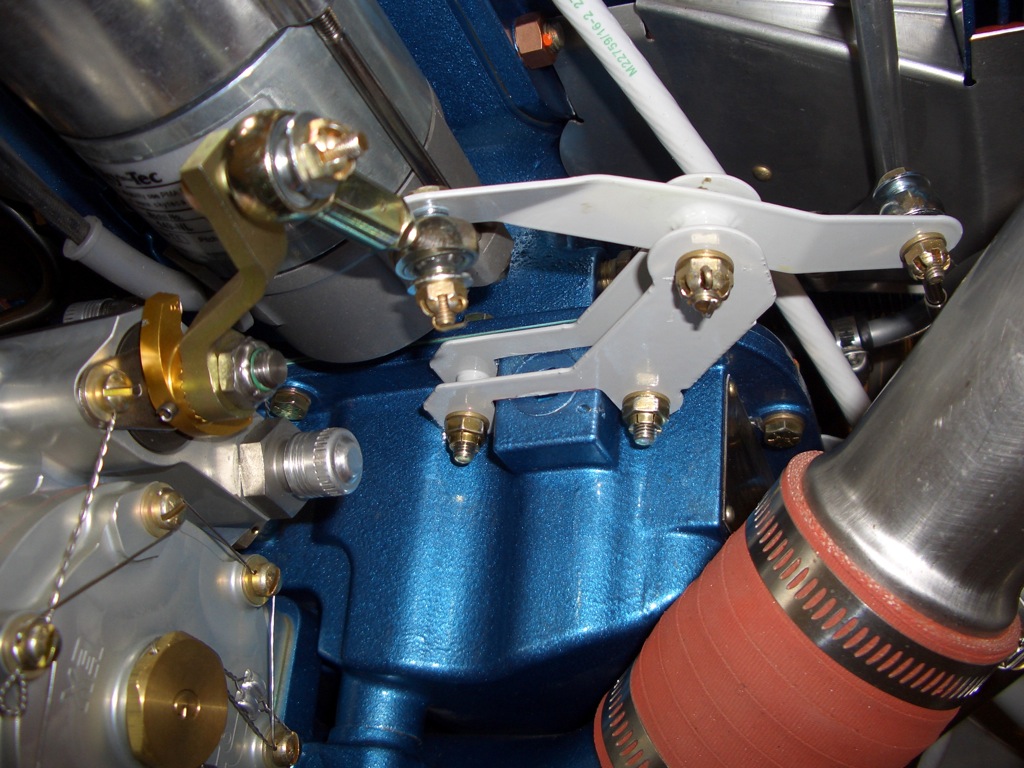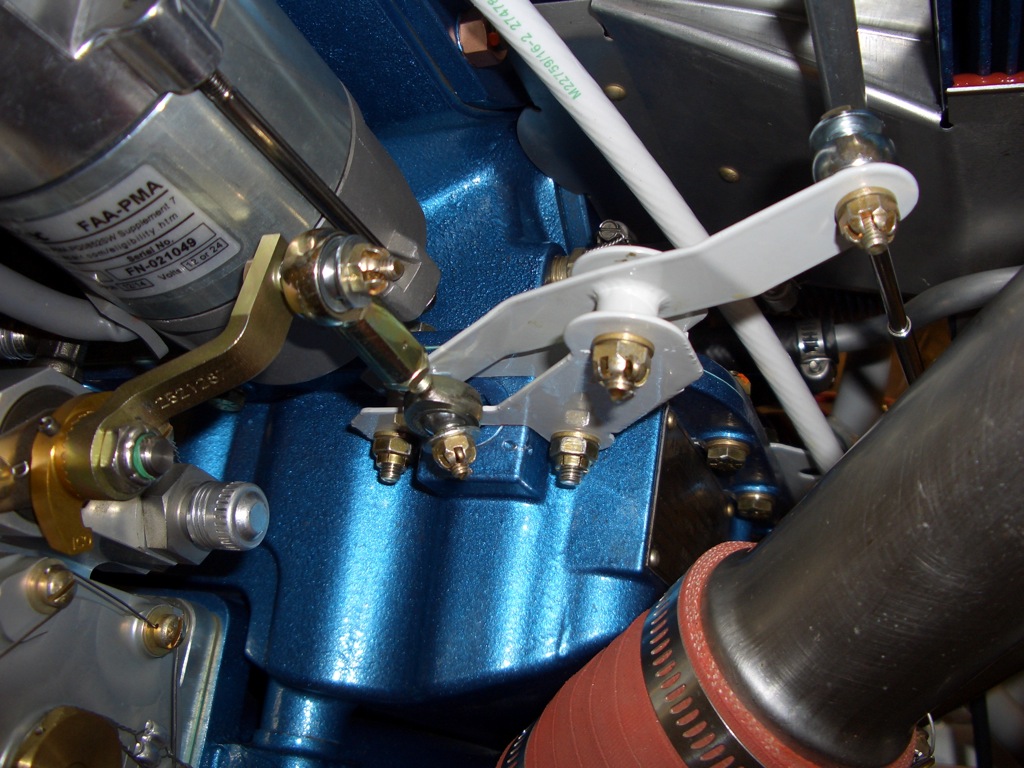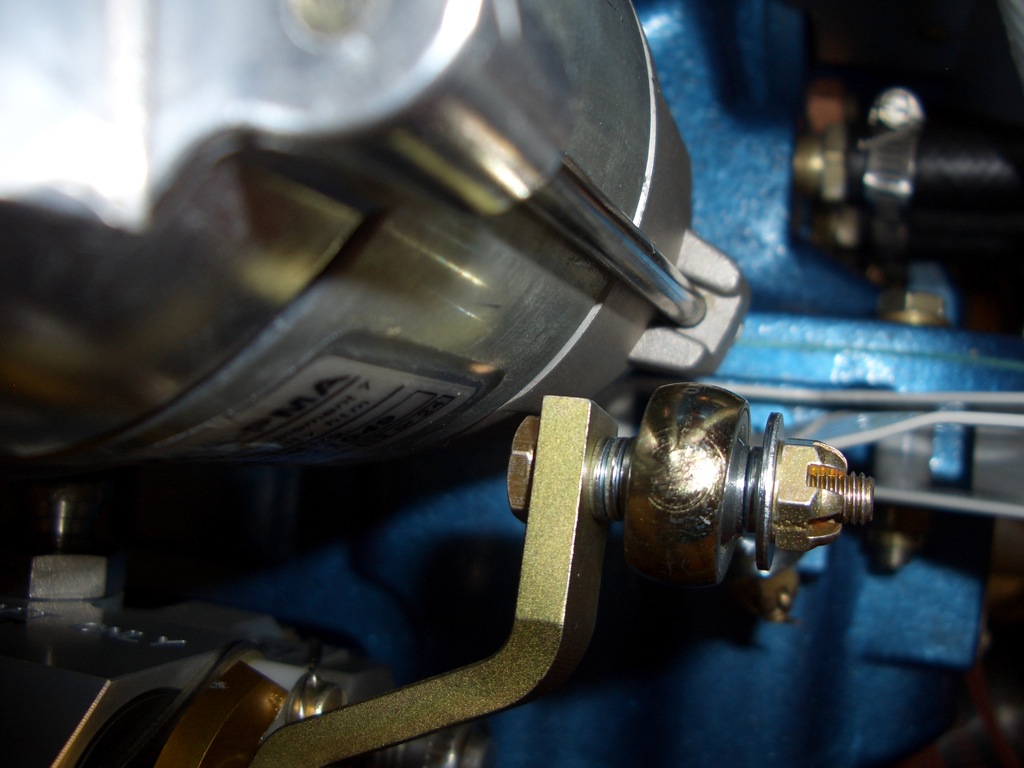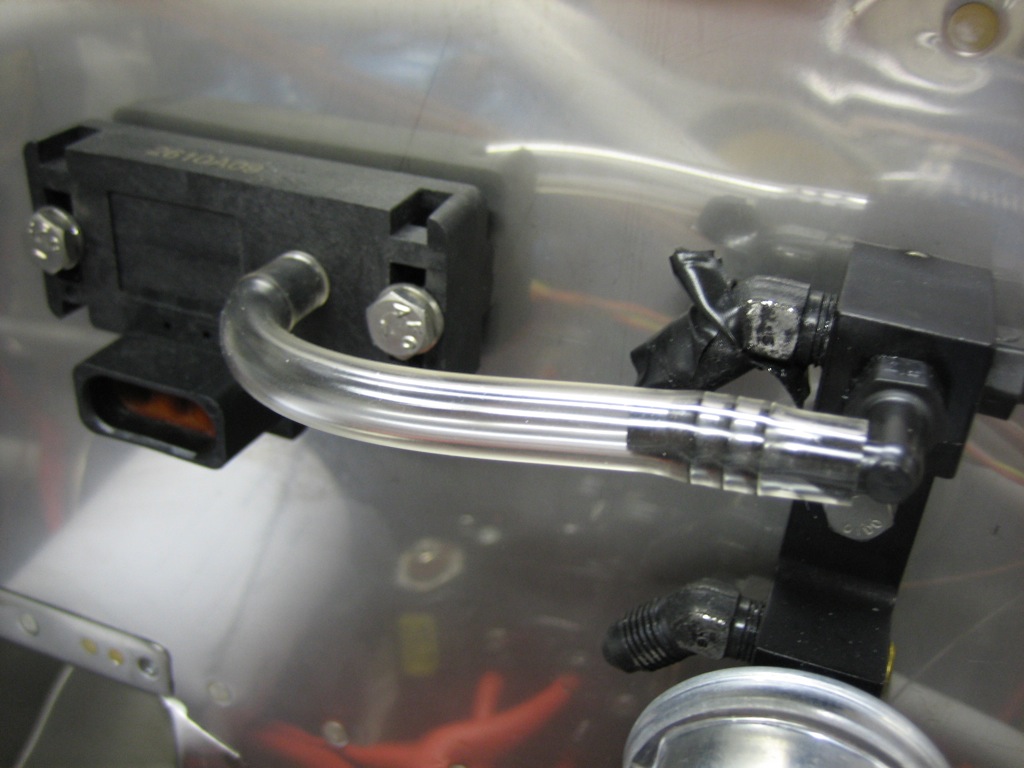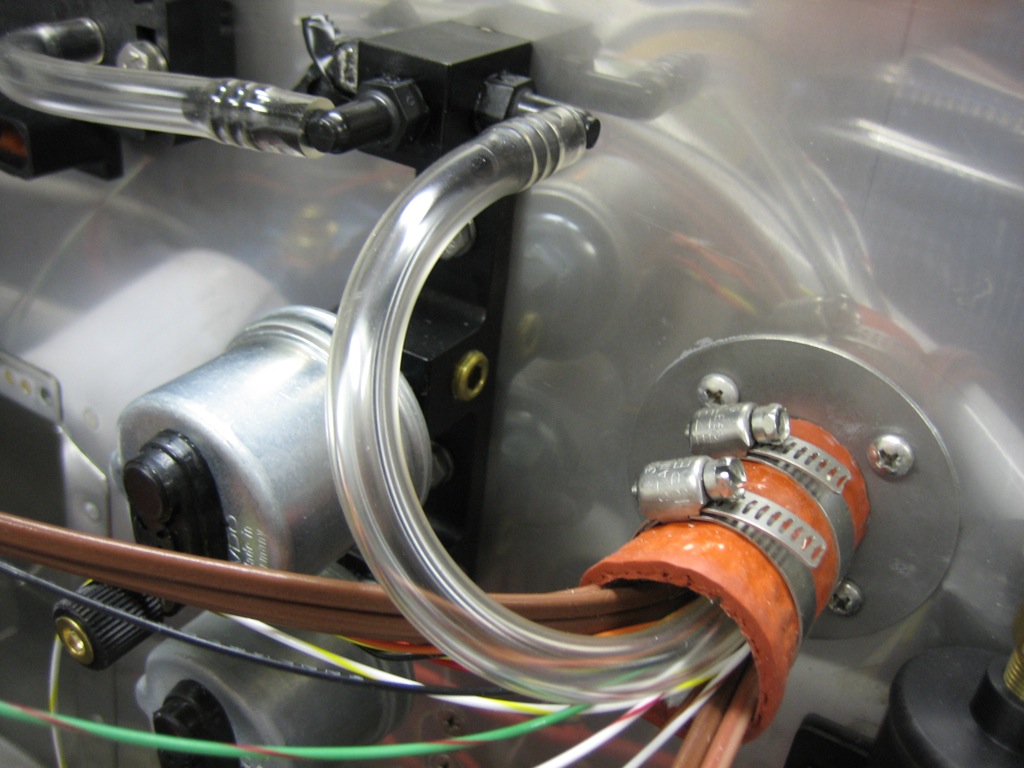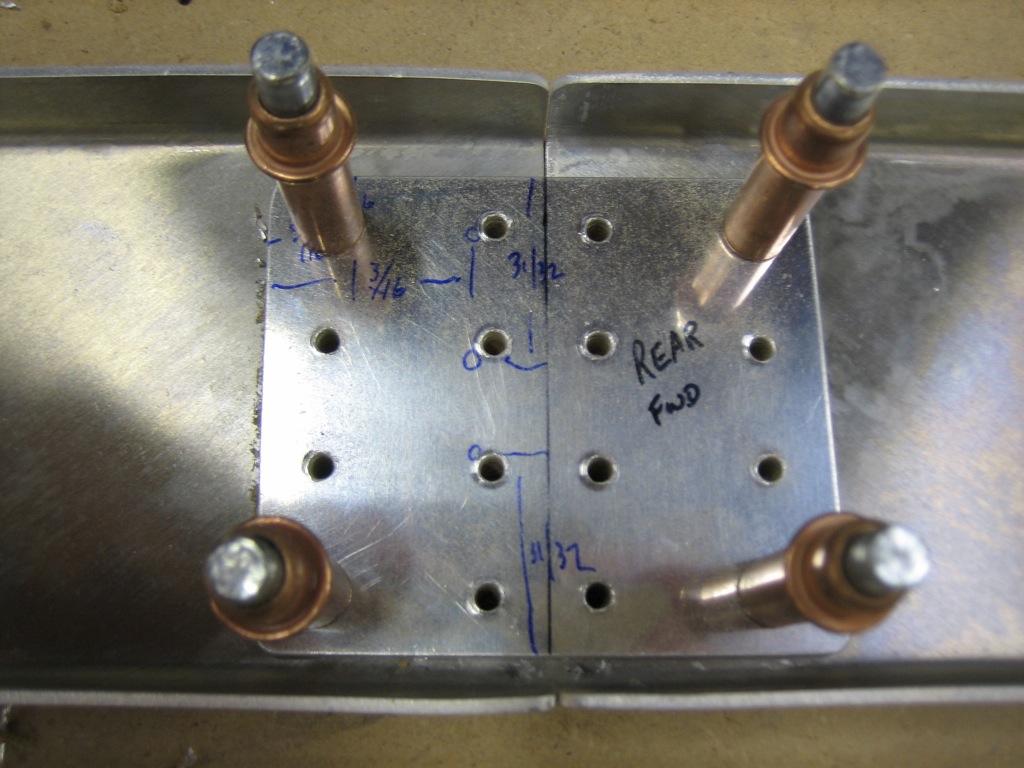I got my battery cable and terminals from SteinAir. I’m going with #2 Tefzel cable even though it’s very hard to bend. I considered both welding cable (recommended by Bob Nuckolls in his AeroElectric Connection book) and CCA Fatwire sold by Perihelion Designs. Both are far more flexible, but the insulation is only good to 105ºC at best vs. Tefzel which is good to 150ºC. It will be a little more difficult to run, and there is a slight weight penalty compared to the more common #4 wire, but this should be made up for by lower cranking wire loses which should result in a faster spinning starter and an easier to start engine.
I crimped one of the connectors on a piece of wire using an impact crimper I picked up from a welding supply company. The crimps aren’t the prettiest, but they’re very secure.
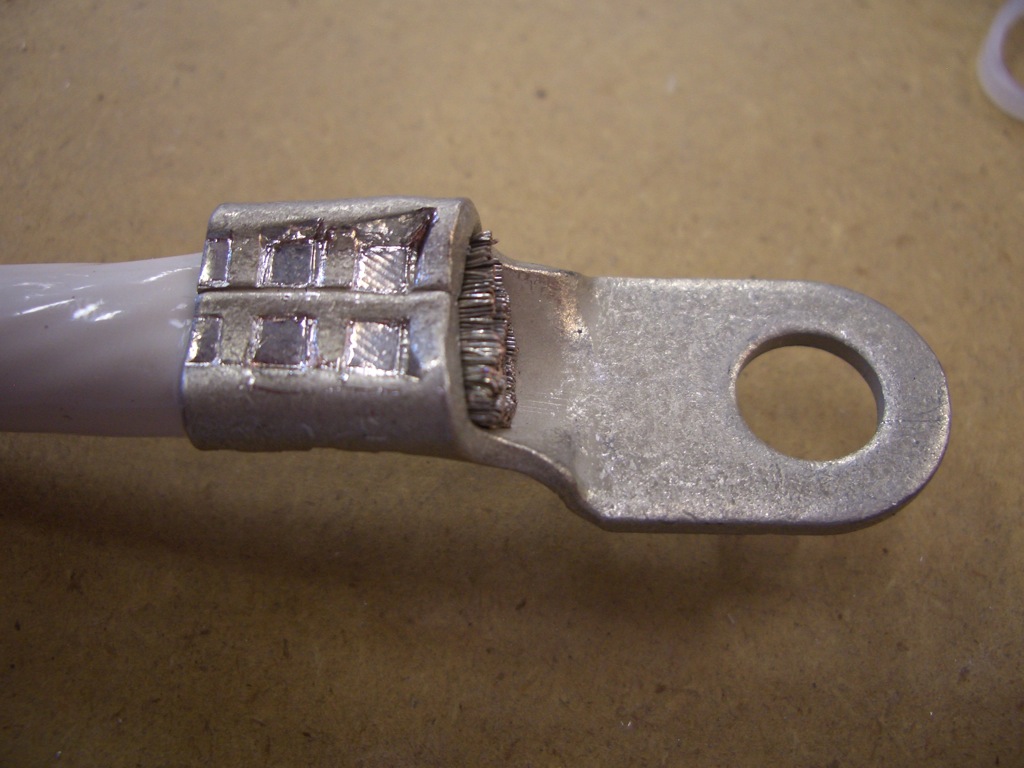
I then slipped a piece of heat-shrink tubing over the joint to provide a little bit of wire support.
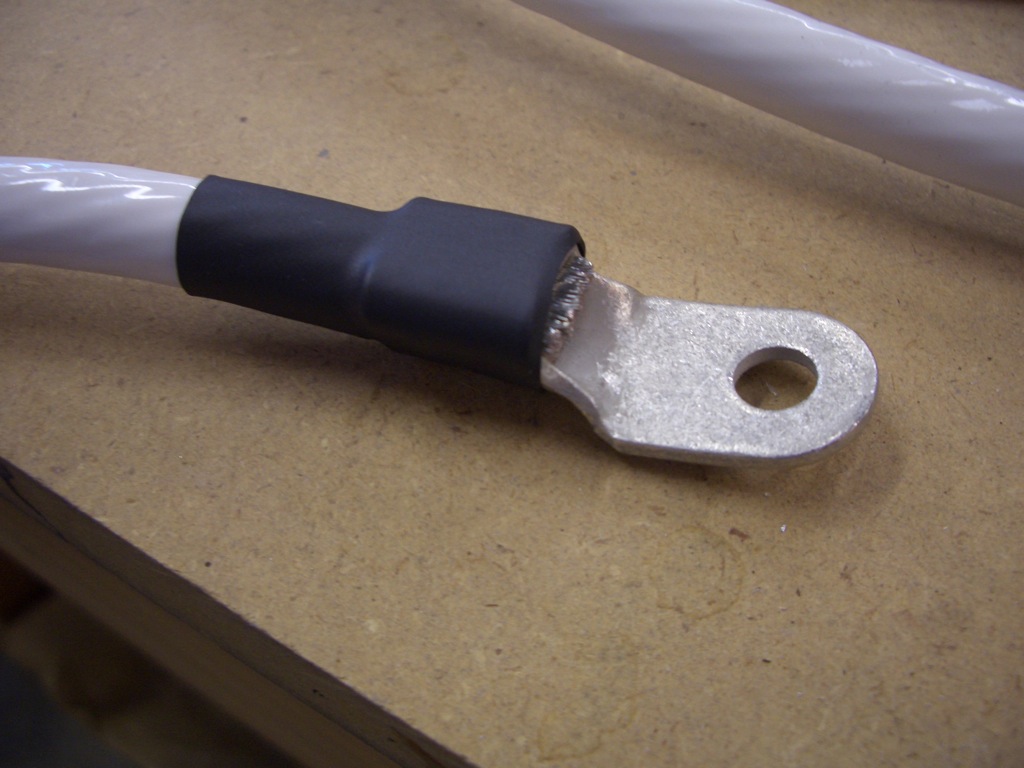
I then bent the end of the terminal over 90º.
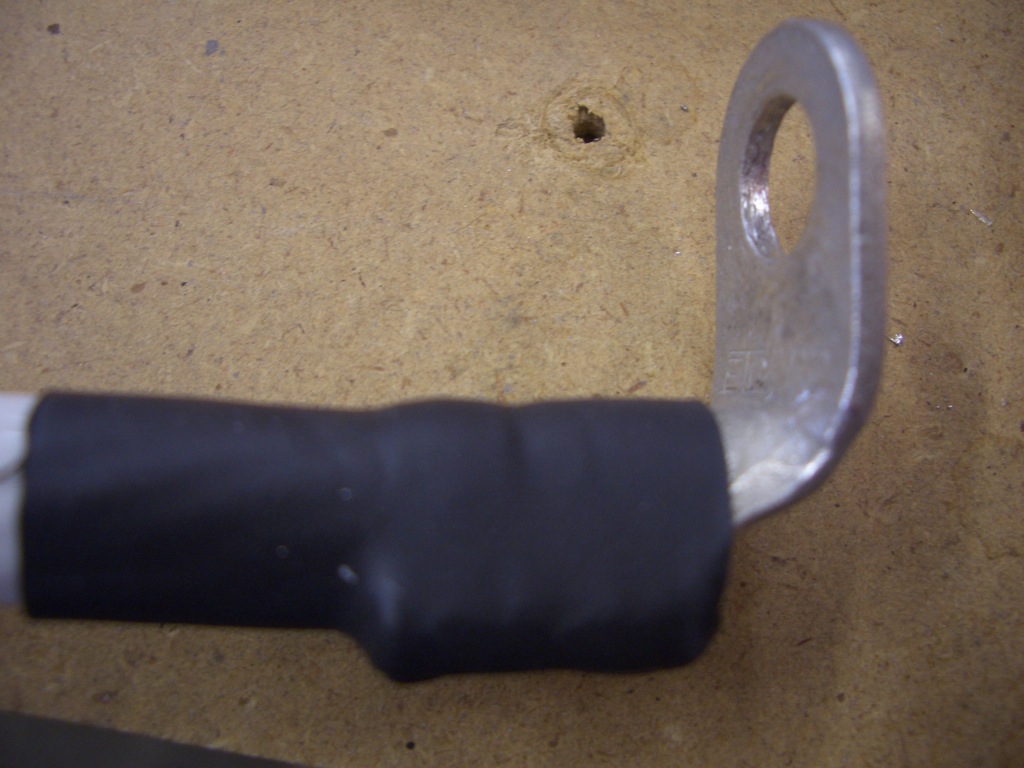
This terminal is attached to the input side of the battery contactor. The other end will attach to the positive terminal on the battery. I need to order so more silicone nipples before attaching the other end for good.

I wanted to see if the mixture bellcrank would fit on the superior sump. It’s supposed to install under these two bolts, but this plug is in the way.
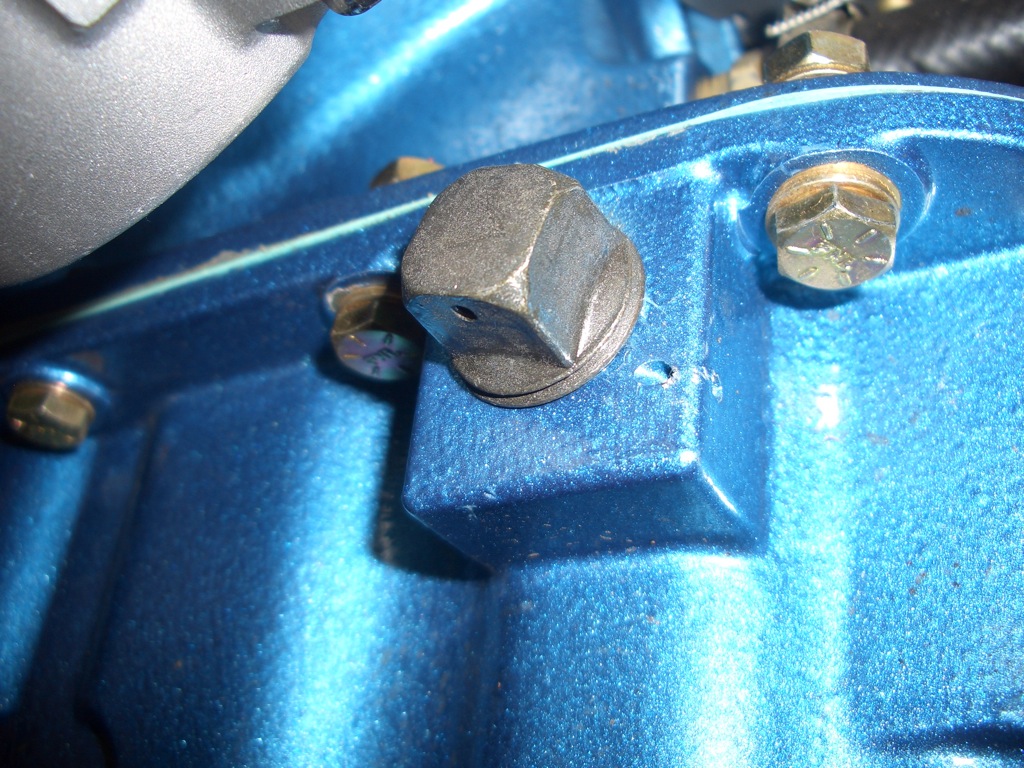
After cutting the safety wire and removing the plug, here’s the hole that’s left.
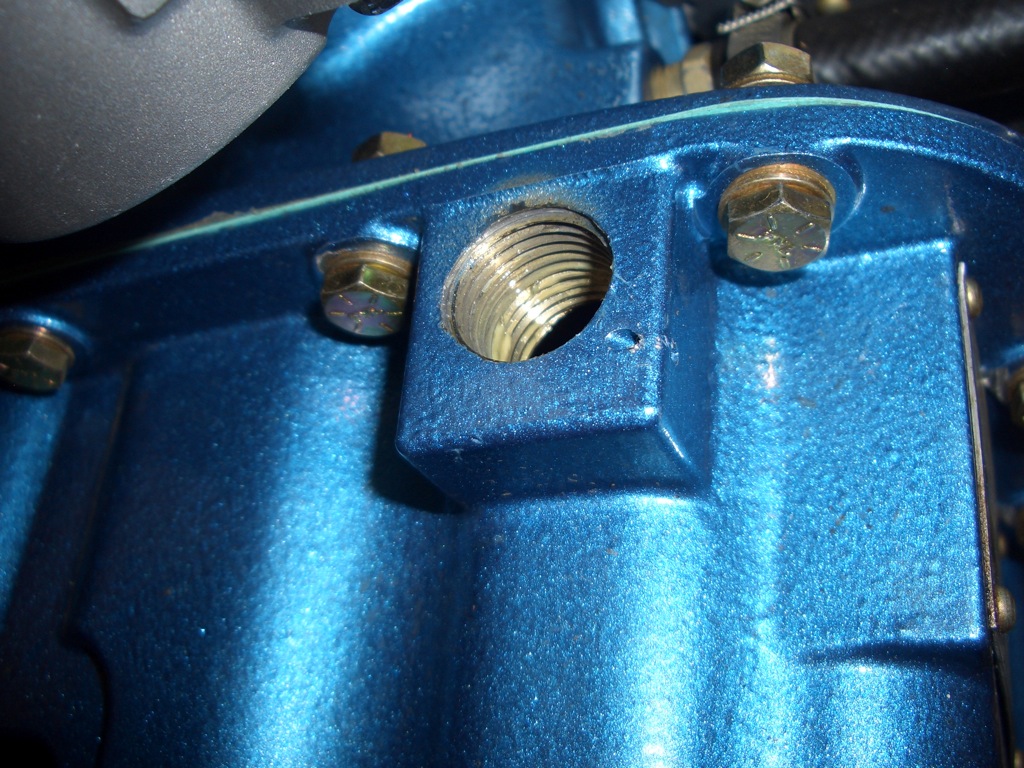
The bracket now fits over the boss in the sump, but unfortunately the holes are still off by almost 1/4″
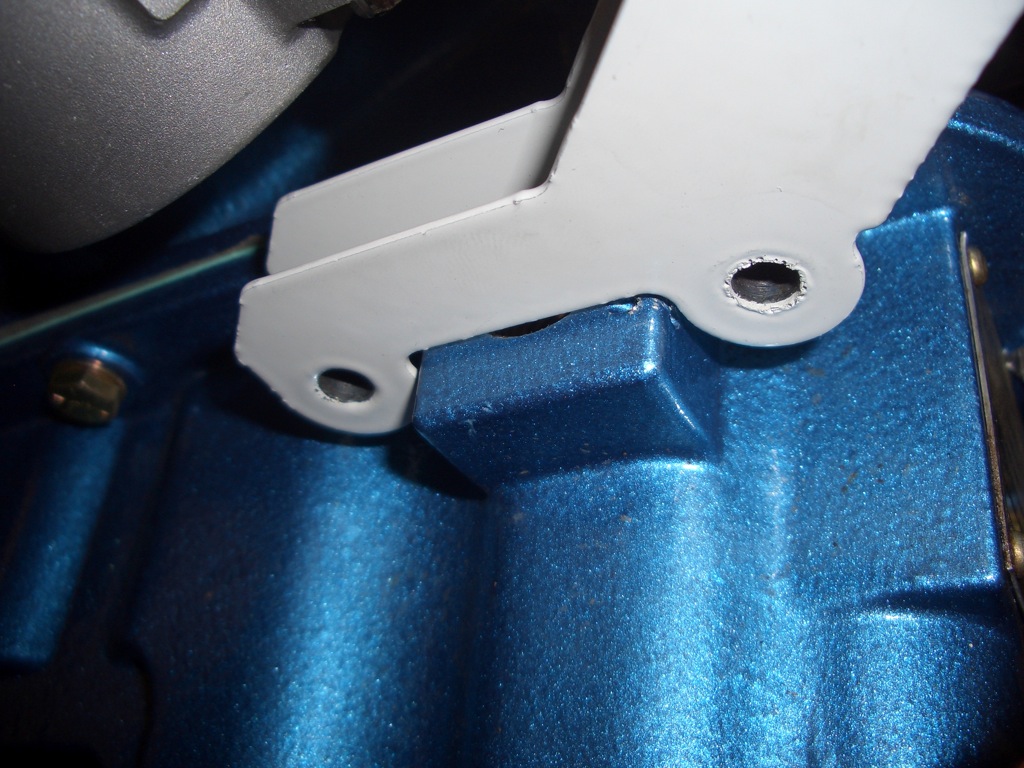
I deepened the notch in the bracket enough that it could be bolted in place. Notice that the hole is still there, and this bracket will prevent the original plug from being reinstalled. I’ll have to order an AN932-5 plug to install here instead. That is a hex drive plug that will install flush with the surface of the case.
Here is the mixture bellcrank in the most rich setting I can get. Unfortunately, the mixture lever is interfering with the starter. I’ll call Precision Airmotive to see if they can send me an alternate mixture lever.
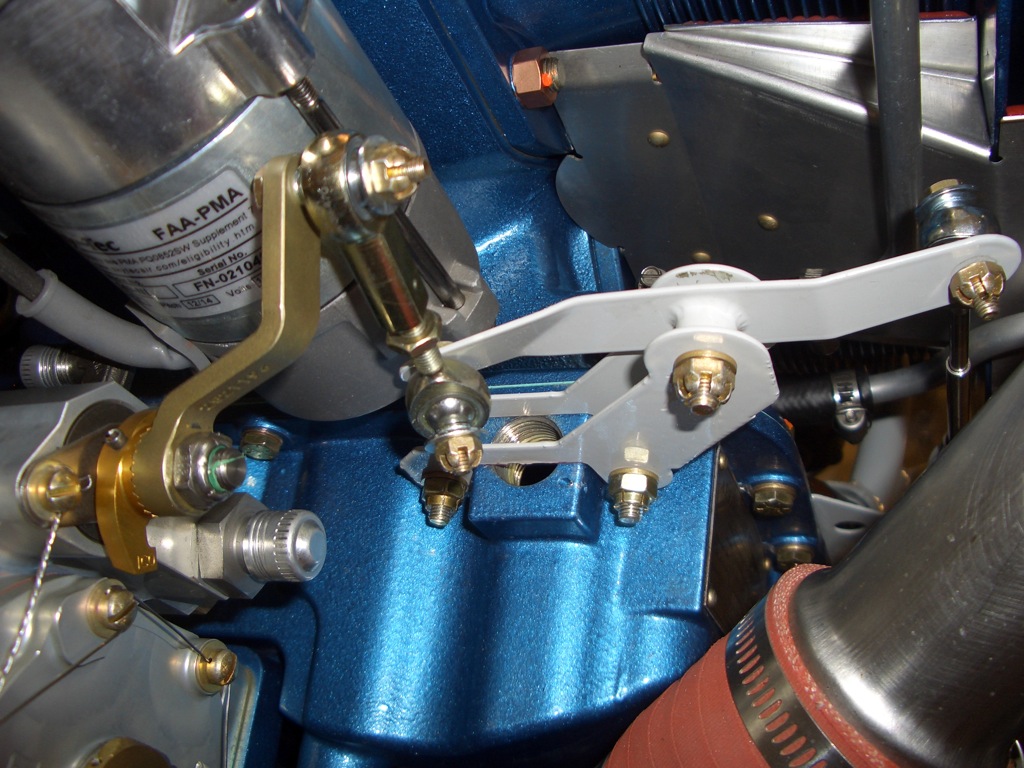
Here is the mixture bellcrank in the most lean position. I can hit the idle cutoff stop without any problems.
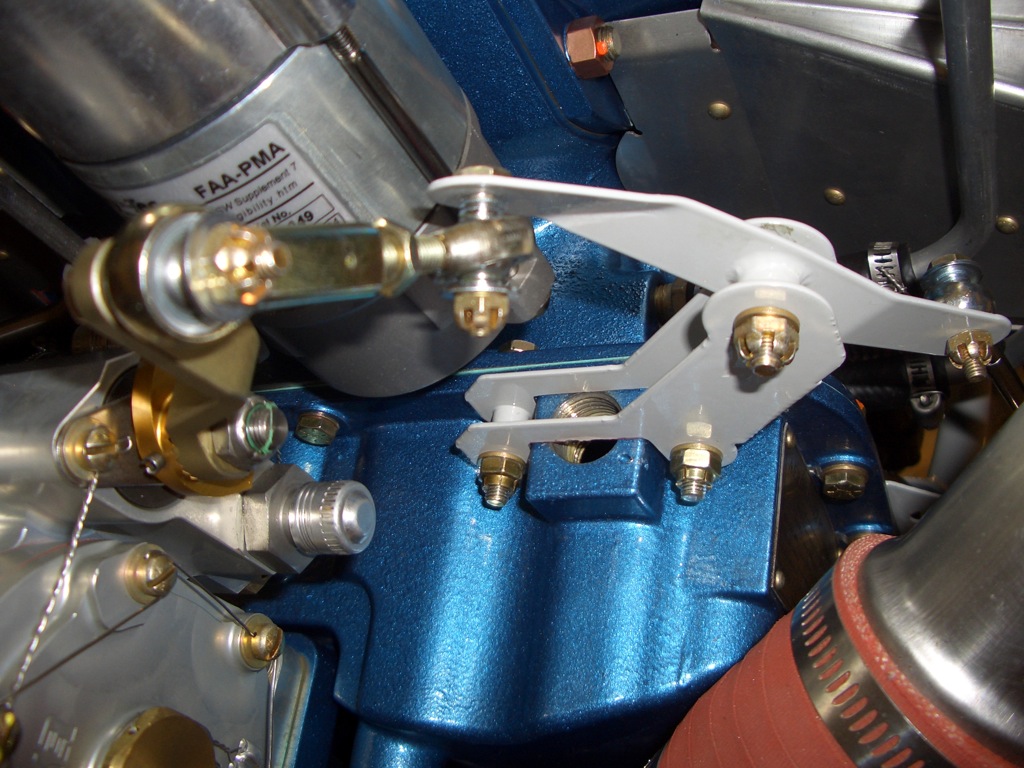
Finally, I spent a little time trying to figure out how to secure the throttle cable. The Superior sump doesn’t have threaded ports in the bottom in the same location as a standard Lycoming sump, so the bracket from Van’s won’t fit. I’ll probably have to fabricate a custom steel bracket for the throttle cable.
